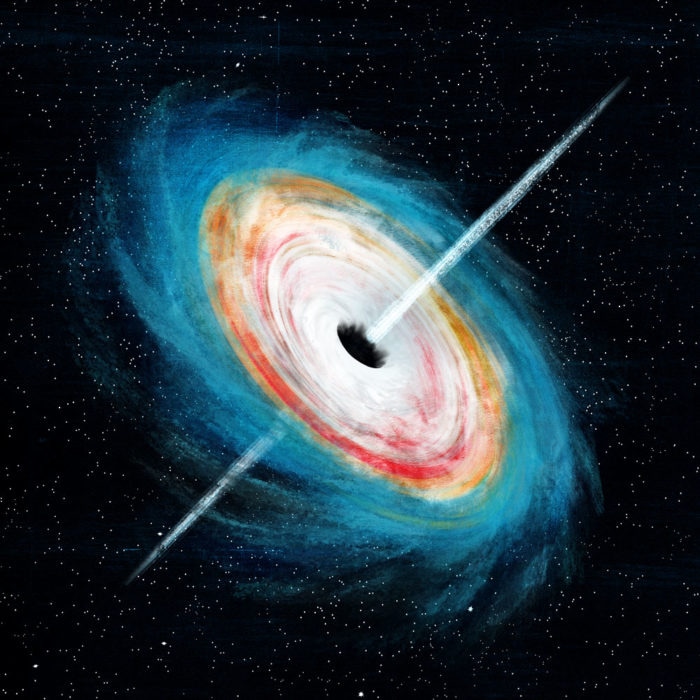Jul 1 2019
Evidence for the direct formation of black holes that do not have to develop from a star remnant has been found by astrophysicists from Western University.
 Illustration of supermassive black hole. (Image credit: Scott Woods, Western University)
Illustration of supermassive black hole. (Image credit: Scott Woods, Western University)
The creation of black holes in the early universe, formed in this way, might offer researchers with an interpretation for the existence of incredibly enormous black holes at a very early stage in the history of the universe.
Shantanu Basu and Arpan Das from Western’s Department of Physics and Astronomy have come up with an explanation for the noticed distribution of supermassive black hole masses and luminosities. Earlier, there was no scientific explanation for this. The study outcomes have been reported in Astrophysical Journal Letters on June 28th, 2019.
The model works based on a very straightforward assumption—supermassive black holes are very rapidly formed over extremely short time periods and then abruptly stop forming. This explanation is contrary to the existing knowledge about the formation of stellar-mass black holes, which arise as a result of collapsing of a very massive star upon itself.
This is indirect observational evidence that black holes originate from direct-collapses and not from stellar remnants.
Shantanu Basu, Astronomy Professor, Department of Physics and Astronomy, Western University
Basu is internationally acknowledged as an expert in the early stages of star formation and protoplanetary disk evolution.
In order to create the new mathematical model, Basu and Das calculated the mass function of supermassive black holes forming over a short time period and experience a very quick exponential growth of mass. It is possible to regulate the mass growth by the Eddington limit set by a balance of gravitation and radiation forces. This limit can even surpass it by a modest factor.
Supermassive black holes only had a short time period where they were able to grow fast and then at some point, because of all the radiation in the universe created by other black holes and stars, their production came to a halt. That’s the direct-collapse scenario.
Shantanu Basu, Astronomy Professor, Department of Physics and Astronomy, Western University
In the past 10 years, a number of supermassive black holes a billion times more massive compared to the Sun have been found out at high “redshifts,” that is, they emerged into the universe within 800 million years following the Big Bang. The existence of these extremely massive and young black holes challenge our knowledge of the formation and growth of black holes.
The direct-collapse scenario makes way for initial masses that are considerably huge compared to what is suggested by the standard stellar remnant scenario, and can go a long way to elucidating the observations. This new outcome offers evidence that such direct-collapse black holes, in fact, emerged in the early universe.
Basu considers that these new outcomes can be applied to future observations to deduce the formation history of the very massive black holes that occur in the universe from very early times.